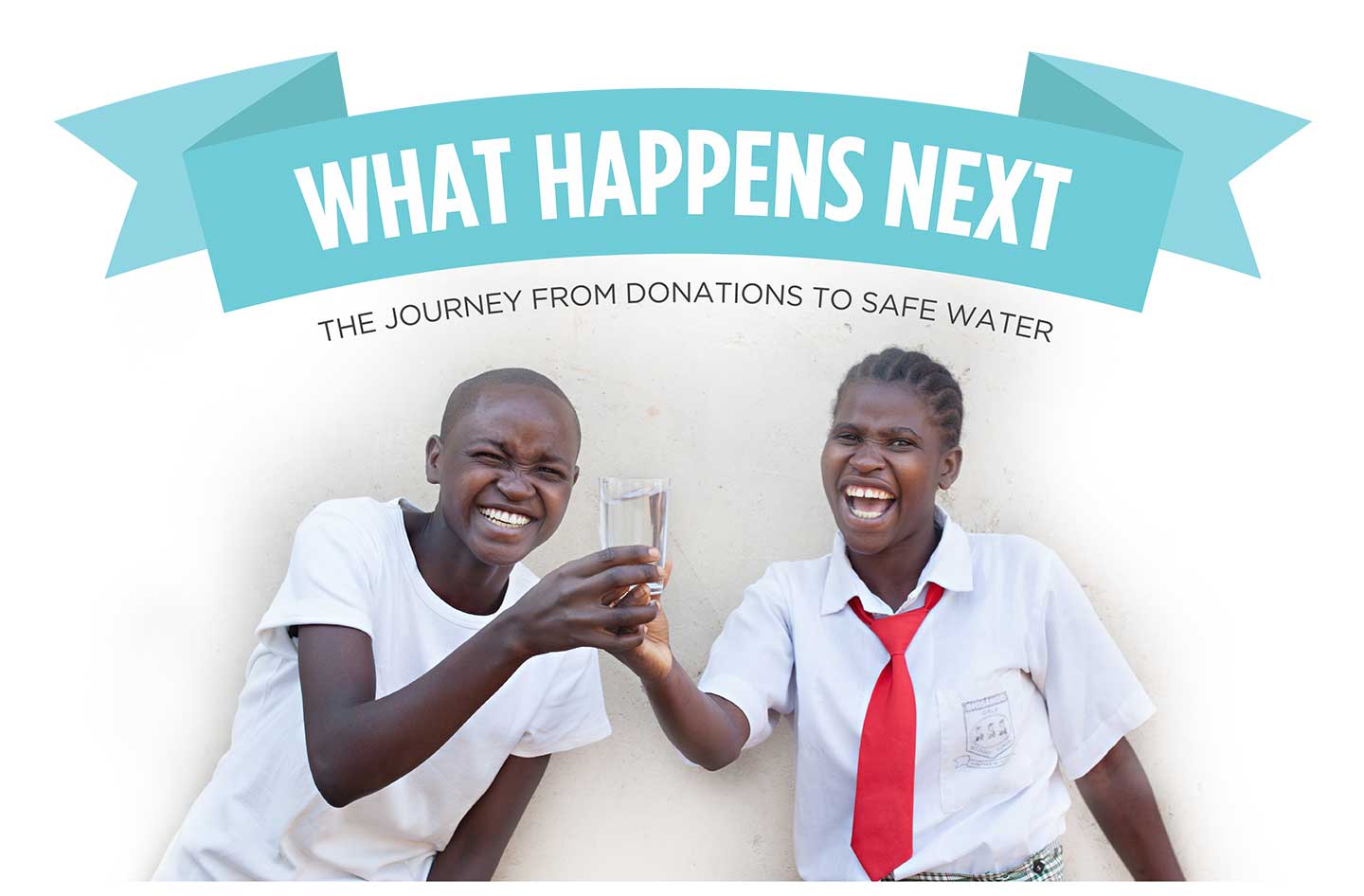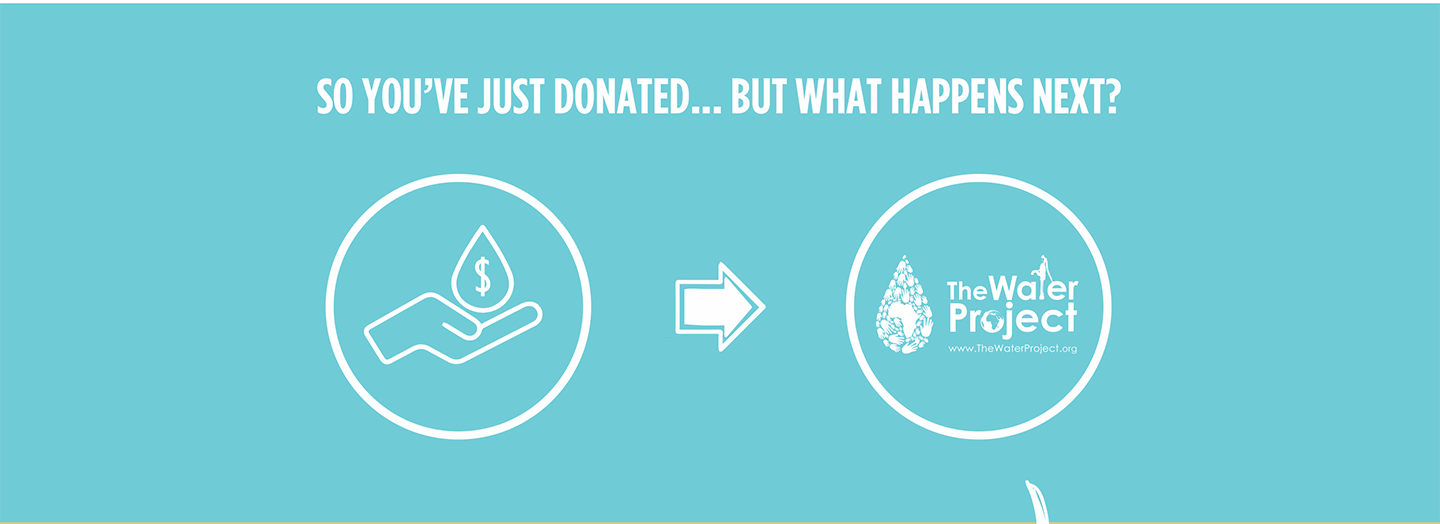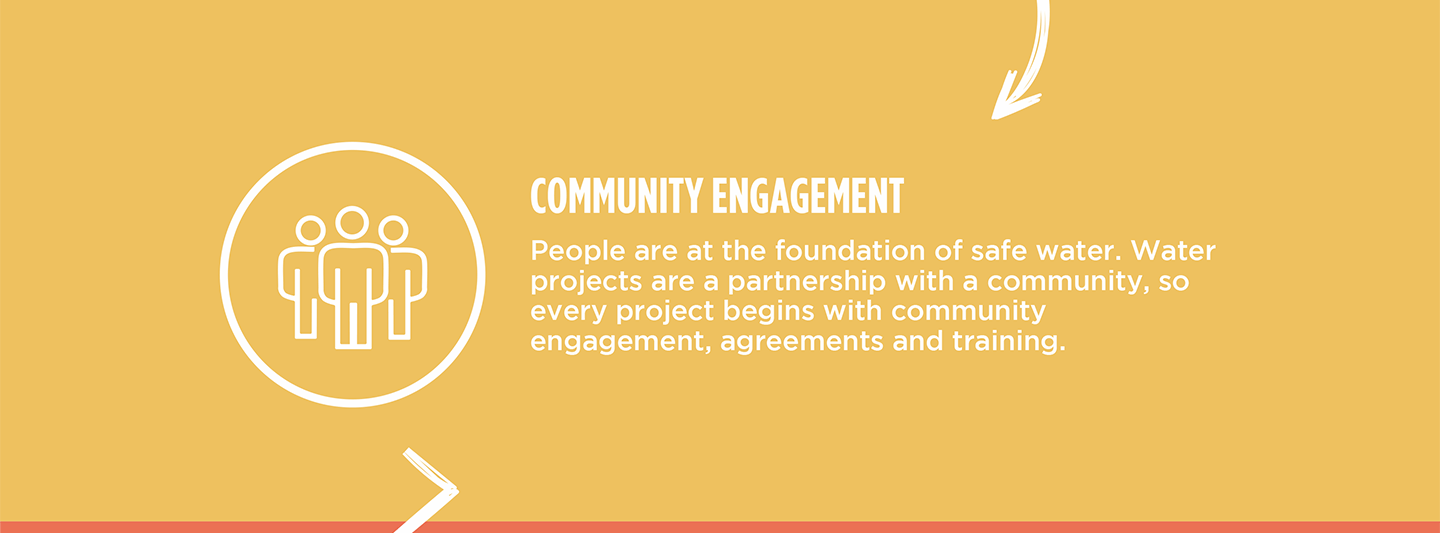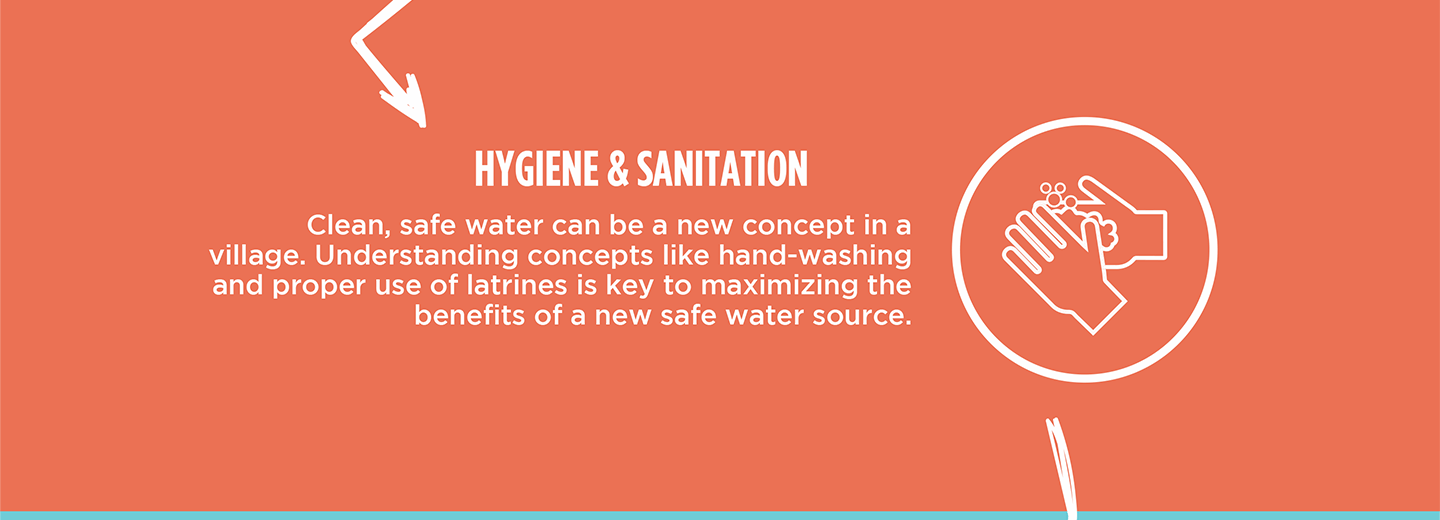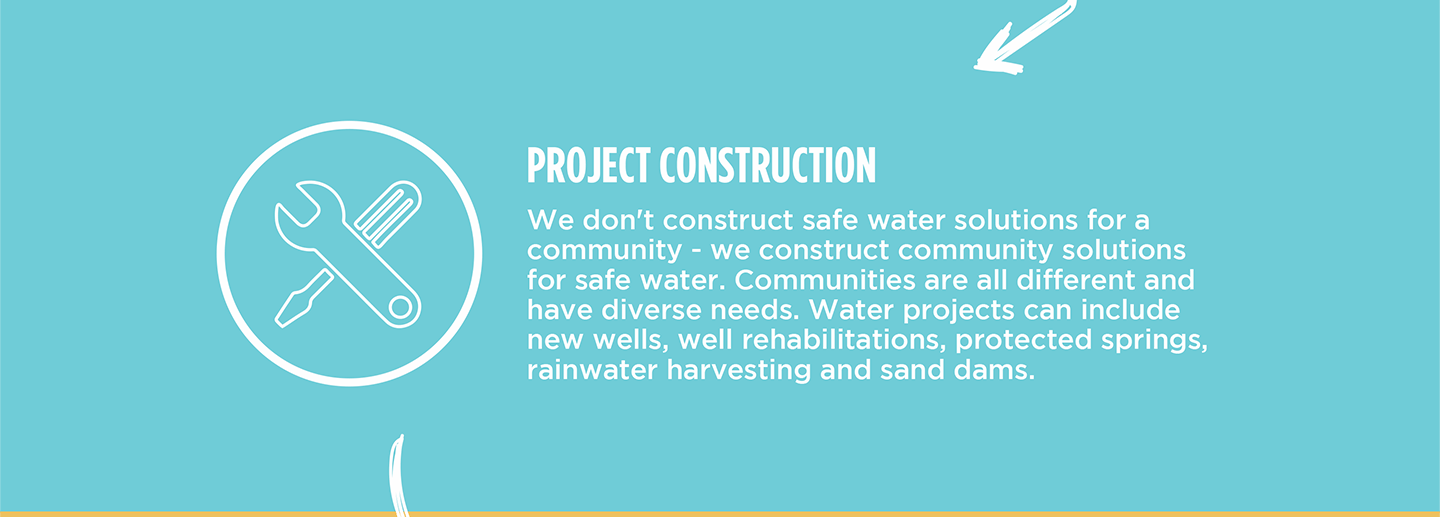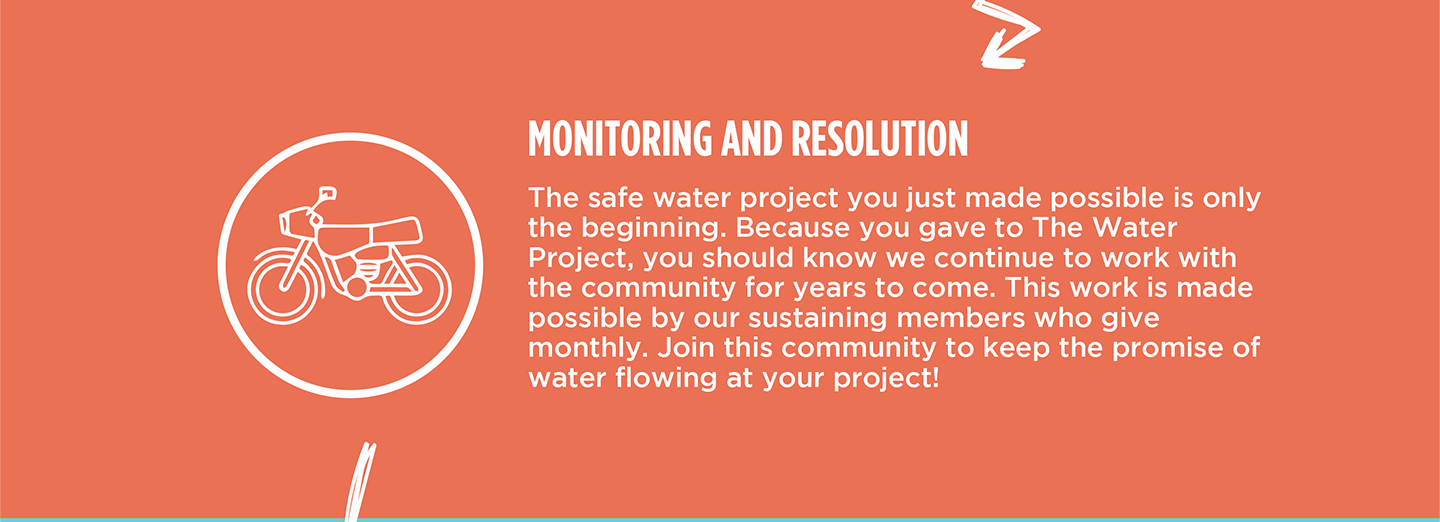Nestled in Kakamega County, Kenya, the Lunyinya Community is home to 280 residents across 40 households. Families here have relied on nearby Shikangania Spring for generations as their water source and lifeline. However, the spring is only partially protected and has fallen into disrepair. What was once a source of hope is now a daily struggle.

On average, fetching water takes around 25 minutes, but it can take nearly an hour during peak times. Long queues and overcrowding are the norm, and in dry seasons, families report waiting up to two hours because the spring’s flow reduces while demand rises. The journey itself is not easy—steep, muddy terrain, and eroded paths make collecting water a dangerous task, especially for children and women carrying heavy containers.

Field Officer Christine Masinde described the spring, "This waterpoint has high discharge, but the spring box is worn out. The backfilled area is frequently stepped on by people who access the spring. The area around the spring is muddy, especially after rain. The drawing point is eroded, and there are no stairs, making it challenging for people to approach the water source. The drainage is not well maintained; as a result, people have to step in water as they fetch water from the discharge pipe."
Elemina Masitsa, a 40-year-old farmer, is well acquainted with the hardships of her community's water crisis. She has struggled to stay healthy for a long time, as the water she consumes from the spring is contaminated. What should sustain her family instead undermines their health and hope.

Ms. Masitsa.
"Generally, my immune system is very low because of constant consumption of contaminated water. I get sick frequently from waterborne and water-related diseases like malaria and typhoid," she shared.
Being a farmer, getting sick often affects her physical health and has lasting impacts on her family's financial well-being.
"Whenever I get sick, my productivity level goes down. This affects my overall income from farming since we solely depend on farming as a source of income. When any of my children get sick, they miss school, and since I have to take care of them, this further impacts my ability to work on the farm and other house chores," Elemina reflected.
"We spend so much money to pay medical expenses. This has put a financial strain on our family since we have to spend on medical consultations, laboratory tests, medication, and sometimes admission charges. Many times, we resort to buying over-the-counter medicine without [a] diagnosis due to [a] lack of funds. Our meager income can not provide for the essential needs, yet we have to take care of medical bills too," she continued.
When all their time is spent fetching water, getting sick from the water they worked so hard to attain, and then having to recover, there is little time for anything else. Work is put on the back burner, education is derailed, and hope feels like a distant dream.

Elemina (right) waits for her chance to collect water at the busy spring.
Elemina lamented, "Drinking water that harms me and my family deeply concerns me. I hope this issue will be addressed as soon as possible so that we can enjoy drinking water without worrying about waterborne diseases."
For Elemina and her neighbors, protecting the Shikangania Spring means more than clean water. It means fewer illnesses, fewer medical bills, and more time for farming, schooling, and simply living. It means a future where families no longer fear the very water they drink — but instead draw strength, health, and hope from it.
Steps Toward a Solution
Our technical experts worked with the local community to identify the most effective solution to their water crisis. They decided to safeguard the existing flowing spring.
Spring Protection
Springs are natural water sources that originate from deep underground. As water travels through various layers of the earth, it undergoes a natural filtration process, making it cleaner and safer to drink. To protect these spring sources from contamination, we construct a waterproof cement structure around layers of clay, stone, and soil. This design channels the spring water through a discharge pipe, facilitating easier, faster, and cleaner water collection.
Chlorine Dispenser
As an extra measure towards water quality safety, uniquely engineered chlorine dispensers are installed at all of our spring protection projects so community members can treat their water with pre-measured doses of chlorine. The chlorine treats any residual contamination and stays active for two to three days, ensuring water stays safe to use even when stored at home. Chlorine delivery and maintenance of the dispensers are part of our ongoing community support.
Community Education & Ownership
Hygiene and sanitation training are integral to our water projects. Training is tailored to each community's specific needs and includes key topics such as proper water handling, improved hygiene practices, disease transmission prevention, and care of the new water point. Safe water and improved hygiene habits foster a healthier future for everyone in the community.
Encouraged and supported by our team's guidance, the community elects a water user committee representative of its diverse members. This committee assumes responsibility for maintaining the water point, organizing community efforts, and gathering fees to ensure its upkeep.

 Protected Spring
Protected Spring
 Rehabilitation Project
Rehabilitation Project












